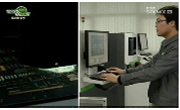Technological innovation plays a crucial role in helping firms maintain competitiveness and achieve sustainable growth in today’s fast-paced and increasingly complex global market. Firms are under continuous pressure to innovate, and Research and De...
http://chineseinput.net/에서 pinyin(병음)방식으로 중국어를 변환할 수 있습니다.
변환된 중국어를 복사하여 사용하시면 됩니다.
- 中文 을 입력하시려면 zhongwen을 입력하시고 space를누르시면됩니다.
- 北京 을 입력하시려면 beijing을 입력하시고 space를 누르시면 됩니다.
Multimodal Deep Learning-based Decision Support Systems for R&D Performance Profiling = R&D 성과 프로파일링을 위한 멀티모달 딥러닝 기반 의사결정지원시스템
한글로보기https://www.riss.kr/link?id=T17157357
- 저자
-
발행사항
서울 : 연세대학교 대학원, 2025
- 학위논문사항
-
발행연도
2025
-
작성언어
영어
-
주제어
R&D performance profiling ; Technology innovation ; Technology management ; Decision support system ; Multimodal deep learning ; Graph-based representation learning ; Technology recommendation system ; Patent ; Technology valuation ; R&D 성과 분석 ; 기술혁신 ; 기술경영 ; 의사결정시스템 ; 멀티모달 딥러닝 ; 그래프 기반 표현학습 ; 기술추천시스템 ; 특허 ; 기술가치평가
-
DDC
001.64
-
발행국(도시)
서울
-
형태사항
vi, 115장 ; 26 cm
-
일반주기명
지도교수: 성태응
-
UCI식별코드
I804:11046-000000558001
- 소장기관
-
0
상세조회 -
0
다운로드
부가정보
다국어 초록 (Multilingual Abstract)
A key focus of this dissertation is the evaluation of the economic value generated by R&D activities and the recommendation of high-potential technologies for commercialization. In contrast to traditional approaches that rely heavily on structured data, this research emphasizes the importance of integrating both structured and unstructured data to capture the full scope of R&D performance. This holistic approach aims to provide firms with more accurate insights into the potential of their innovations, enabling better strategic decision-making.
The first study conducts an empirical analysis to identify the key determinants influencing R&D performance, specifically focusing on patent life as a proxy for the effectiveness of R&D activities. By analyzing patent attributes, market conditions, and macroeconomic factors, the study demonstrates how these variables impact the longevity of patents and the broader effectiveness of a firm’s innovation efforts.
The second study proposes a multimodal-based R&D performance evaluation model. This model goes beyond conventional evaluation methods by integrating both structured data, such as patent bibliographic information and corporate financial data, unstructured data including textual information from patent documents. By using a multimodal approach, the model captures the complex interactions between a firm’s R&D activities and its financial performance, providing a more accurate and effective assessment of a firm's technological assets.
The third study proposes a customized technology recommendation system using graph-based representation learning. Unlike traditional recommendation systems, which often focus solely on patent similarity, this system incorporates firm-specific characteristics to provide more tailored recommendations. By leveraging firm and patent graphs, the system identifies the optimal technologies for commercialization based on the unique characteristics of each firm, such as its industry position, technological expertise, and market needs. This personalized approach ensures that firms receive technology recommendations that align closely with their strategic goals, thus enhancing their ability to successfully commercialize innovative technologies.
The findings of this dissertation offer a novel framework for comprehensive R&D performance profiling, emphasizing the strategic importance of patent evaluation and technology recommendation. The proposed models not only enhance the accuracy of economic value assessments but also provide actionable insights for firms seeking to commercialize high-value technologies. These insights enable firms to make more informed decisions regarding their R&D investments, leading to improved innovation outcomes and a stronger competitive position in the market.
Ultimately, the findings of this dissertation present a comprehensive framework for R&D performance profiling, emphasizing the importance of strategies for evaluating the economic value of technologies and for effectively integrating external technologies through technology recommendation strategies. The proposed profiling process not only enhances the accuracy of technology assessments but also provides actionable insights that enable firms to commercialize high-value technologies. Furthermore, this dissertation introduces a new approach that integrates advanced deep learning techniques with practical business applications, thereby expanding the knowledge base regarding R&D performance profiling. Based on this, it is expected that this dissertation will contribute to the establishment of a successful decision-making system that integrates both internal and external technological innovations in the development of commercialization strategies for firms.
Technological innovation plays a crucial role in helping firms maintain competitiveness and achieve sustainable growth in today’s fast-paced and increasingly complex global market. Firms are under continuous pressure to innovate, and Research and Development (R&D) activities are at the heart of this process. However, to ensure that these R&D efforts lead to tangible and profitable outcomes, it is essential to evaluate the economic potential of innovations effectively. This dissertation examines the application of multimodal deep learning and graph-based representation learning to develop advanced decision support systems for profiling R&D performance. By leveraging these cutting-edge techniques, this research addresses the need for more accurate and comprehensive methods of assessing R&D outcomes, particularly in relation to technology commercialization.
A key focus of this dissertation is the evaluation of the economic value generated by R&D activities and the recommendation of high-potential technologies for commercialization. In contrast to traditional approaches that rely heavily on structured data, this research emphasizes the importance of integrating both structured and unstructured data to capture the full scope of R&D performance. This holistic approach aims to provide firms with more accurate insights into the potential of their innovations, enabling better strategic decision-making.
The first study conducts an empirical analysis to identify the key determinants influencing R&D performance, specifically focusing on patent life as a proxy for the effectiveness of R&D activities. By analyzing patent attributes, market conditions, and macroeconomic factors, the study demonstrates how these variables impact the longevity of patents and the broader effectiveness of a firm’s innovation efforts.
The second study proposes a multimodal-based R&D performance evaluation model. This model goes beyond conventional evaluation methods by integrating both structured data, such as patent bibliographic information and corporate financial data, unstructured data including textual information from patent documents. By using a multimodal approach, the model captures the complex interactions between a firm’s R&D activities and its financial performance, providing a more accurate and effective assessment of a firm's technological assets.
The third study proposes a customized technology recommendation system using graph-based representation learning. Unlike traditional recommendation systems, which often focus solely on patent similarity, this system incorporates firm-specific characteristics to provide more tailored recommendations. By leveraging firm and patent graphs, the system identifies the optimal technologies for commercialization based on the unique characteristics of each firm, such as its industry position, technological expertise, and market needs. This personalized approach ensures that firms receive technology recommendations that align closely with their strategic goals, thus enhancing their ability to successfully commercialize innovative technologies.
The findings of this dissertation offer a novel framework for comprehensive R&D performance profiling, emphasizing the strategic importance of patent evaluation and technology recommendation. The proposed models not only enhance the accuracy of economic value assessments but also provide actionable insights for firms seeking to commercialize high-value technologies. These insights enable firms to make more informed decisions regarding their R&D investments, leading to improved innovation outcomes and a stronger competitive position in the market.
Ultimately, the findings of this dissertation present a comprehensive framework for R&D performance profiling, emphasizing the importance of strategies for evaluating the economic value of technologies and for effectively integrating external technologies through technology recommendation strategies. The proposed profiling process not only enhances the accuracy of technology assessments but also provides actionable insights that enable firms to commercialize high-value technologies. Furthermore, this dissertation introduces a new approach that integrates advanced deep learning techniques with practical business applications, thereby expanding the knowledge base regarding R&D performance profiling. Based on this, it is expected that this dissertation will contribute to the establishment of a successful decision-making system that integrates both internal and external technological innovations in the development of commercialization strategies for firms.
국문 초록 (Abstract)
이 논문의 주요 목적은 R&D 활동이 창출하는 기술의 경제적 가치를 평가하고, 사업화에 적합한 높은 잠재력을 가진 기술을 추천하는 데 있다. 전통적인 접근법이 구조화된 데이터에 지나치게 의존하는 것과 달리, 본 연구는 R&D 성과를 분석하는데 있어 비구조화된 데이터와 구조화된 데이터를 통합하는 것에 대한 중요성을 강조한다. 이러한 통합적 접근은 기업의 기술 혁신에 대한 잠재력을 보다 정확하게 통찰하고, 기술사업화 과정에서의 전략적 의사결정을 지원할 수 있도록 한다.
첫 번째 연구에서는 R&D 성과에 영향을 미치는 주요 결정 요인을 식별하기 위한 실증 분석을 수행하며, 특허 수명을 기업의 R&D 성과를 대변하는 대리변수로 적용한다. 이를 통해 특허의 내재적 속성 및 사업화 적용 시장의 업황, 거시경제적 요인이 기업의 R&D 활동에 어떻게 영향을 미치는지 관찰한다.
두 번째 연구에서는 멀티모달 기반의 R&D 성과 평가 모델을 제안한다. 제안 모델은 특허 서지 정보 및 기업 재무데이터와 같은 구조화된 데이터와 특허 텍스트와 같은 비구조화된 데이터를 통합하여 기업의 R&D 성과를 보다 정확하고 신속히 평가할 수 있는 혁신적인 방법론을 제시한다.
세 번째 연구에서는 그래프 기반 표현 학습을 적용한 기업 맞춤형 기술 추천시스템을 제안한다. 전통적인 추천 시스템이 기술의 유사성에만 초점을 맞추는 것과 달리, 제안 시스템은 기업의 고유한 특성 및 과거 기업의 기술사업화 이력을 바탕으로 맞춤형 기술 추천을 제공한다. 이를 위해 제안 시스템은 기업과 특허 그래프에 대한 표현 학습을 적용함으로써 각 기업의 사업화 전략에 최적화된 기술을 식별한다.
최종적으로 본 논문의 연구 결과는 R&D 성과 프로파일링을 위한 포괄적인 프레임워크를 제시하며, 그 중 기술의 경제적 가치를 평가하는 전략과 외부 기술의 효과적 유입을 위한 기술 추천 전략의 중요성을 강조한다. 제안된 프로파일링 프로세스는 기술 평가의 정확성을 향상시킬 뿐만 아니라, 기업이 높은 가치를 지닌 기술을 상용화할 수 있도록 실질적인 통찰을 제공한다. 또한 본 논문은 고급 딥러닝 기법과 실제 비즈니스 응용을 통합한 새로운 접근법을 제시함으로써, R&D 성과 평가와 기술 관리에 대한 지식 체계를 확장하고, 더 나아가 기업이 기술사업화 전략을 수립함에 있어 내외부 기술 혁신을 통합한 성공적인 의사결정 체계를 구축하는데 기여할 것으로 기대된다.
기술 혁신은 기업이 경쟁력을 유지하고 지속 가능한 성장을 달성하는 데 중요한 역할을 한다. 복잡성이 점차 증대되는 현대의 글로벌 시장에서 기업들은 지속적인 혁신 압박을 받고 있으며,...
기술 혁신은 기업이 경쟁력을 유지하고 지속 가능한 성장을 달성하는 데 중요한 역할을 한다. 복잡성이 점차 증대되는 현대의 글로벌 시장에서 기업들은 지속적인 혁신 압박을 받고 있으며, R&D 활동은 이 과정의 핵심에 있다. 그러나 이러한 R&D 노력이 실질적이고 수익성 있는 결과로 이어지도록 하기 위해서는 혁신의 경제적 잠재력을 효과적으로 평가하는 것이 필수적이다. 따라서 본 논문은 멀티모달 딥러닝과 그래프 기반 표현 학습을 적용하여 R&D 성과 프로파일링을 위한 고도화된 의사결정 지원 시스템을 제시하는 것에 목적을 둔다. 이를 통해 본 연구는 기술사업화와 관련된 R&D 성과에 대해 전주기적 관점에서의 정확하고 포괄적인 분석 방법을 제시하고자 한다.
이 논문의 주요 목적은 R&D 활동이 창출하는 기술의 경제적 가치를 평가하고, 사업화에 적합한 높은 잠재력을 가진 기술을 추천하는 데 있다. 전통적인 접근법이 구조화된 데이터에 지나치게 의존하는 것과 달리, 본 연구는 R&D 성과를 분석하는데 있어 비구조화된 데이터와 구조화된 데이터를 통합하는 것에 대한 중요성을 강조한다. 이러한 통합적 접근은 기업의 기술 혁신에 대한 잠재력을 보다 정확하게 통찰하고, 기술사업화 과정에서의 전략적 의사결정을 지원할 수 있도록 한다.
첫 번째 연구에서는 R&D 성과에 영향을 미치는 주요 결정 요인을 식별하기 위한 실증 분석을 수행하며, 특허 수명을 기업의 R&D 성과를 대변하는 대리변수로 적용한다. 이를 통해 특허의 내재적 속성 및 사업화 적용 시장의 업황, 거시경제적 요인이 기업의 R&D 활동에 어떻게 영향을 미치는지 관찰한다.
두 번째 연구에서는 멀티모달 기반의 R&D 성과 평가 모델을 제안한다. 제안 모델은 특허 서지 정보 및 기업 재무데이터와 같은 구조화된 데이터와 특허 텍스트와 같은 비구조화된 데이터를 통합하여 기업의 R&D 성과를 보다 정확하고 신속히 평가할 수 있는 혁신적인 방법론을 제시한다.
세 번째 연구에서는 그래프 기반 표현 학습을 적용한 기업 맞춤형 기술 추천시스템을 제안한다. 전통적인 추천 시스템이 기술의 유사성에만 초점을 맞추는 것과 달리, 제안 시스템은 기업의 고유한 특성 및 과거 기업의 기술사업화 이력을 바탕으로 맞춤형 기술 추천을 제공한다. 이를 위해 제안 시스템은 기업과 특허 그래프에 대한 표현 학습을 적용함으로써 각 기업의 사업화 전략에 최적화된 기술을 식별한다.
최종적으로 본 논문의 연구 결과는 R&D 성과 프로파일링을 위한 포괄적인 프레임워크를 제시하며, 그 중 기술의 경제적 가치를 평가하는 전략과 외부 기술의 효과적 유입을 위한 기술 추천 전략의 중요성을 강조한다. 제안된 프로파일링 프로세스는 기술 평가의 정확성을 향상시킬 뿐만 아니라, 기업이 높은 가치를 지닌 기술을 상용화할 수 있도록 실질적인 통찰을 제공한다. 또한 본 논문은 고급 딥러닝 기법과 실제 비즈니스 응용을 통합한 새로운 접근법을 제시함으로써, R&D 성과 평가와 기술 관리에 대한 지식 체계를 확장하고, 더 나아가 기업이 기술사업화 전략을 수립함에 있어 내외부 기술 혁신을 통합한 성공적인 의사결정 체계를 구축하는데 기여할 것으로 기대된다.
목차 (Table of Contents)
- List of Figures ······················································································· ⅲ
- List of Tables ······················································································· ⅳ
- Abstract ································································································ ⅴ
- Chapter 1. Introduction ············································································ 1
- Chapter 2. Research background ································································ 4
- List of Figures ······················································································· ⅲ
- List of Tables ······················································································· ⅳ
- Abstract ································································································ ⅴ
- Chapter 1. Introduction ············································································ 1
- Chapter 2. Research background ································································ 4
- 2.1. Determinants influencing R&D performance ········································ 4
- 2.2. Data-based R&D performance evaluation ············································· 7
- 2.3. Technology recommendation system ··················································· 10
- Chapter 3. Empirical analysis of determinants influencing R&D performance ······· 14
- 3.1. Chapter introduction ······································································· 14
- 3.2. Research hypotheses ······································································· 17
- 3.3. Data & Methodology ····································································· 20
- 3.3.1. Data ······················································································ 20
- 3.3.2. Methodology ··········································································· 23
- 3.3.3. Definition of intrinsic & extrinsic factors ······································· 25
- 3.4. Empirical results ··········································································· 28
- 3.5. Chapter summary ··········································································· 32
- Chapter 4. Multimodal-based R&D performance evaluation strategy ··················· 33
- 4.1. Chapter introduction ······································································· 33
- 4.2. Methodology ················································································· 38
- 4.2.1. Data collection and preprocessing ················································ 38
- 4.2.2. Framework of multimodal-based joint deep learning model ················ 48
- 4.3. Experimental results ······································································· 50
- 4.3.1. Experimental settings ································································ 50
- 4.3.2. Experimental results and analysis ················································· 53
- 4.4. Chapter summary ··········································································· 59
- Chapter 5. Graph-based technology recommendation strategy ···························· 61
- 5.1. Chapter introduction ······································································· 61
- 5.2. Framework of technology recommendation system ································· 65
- 5.2.1. Data collection and preprocessing ················································ 67
- 5.2.2. GAT-based representation learning ··············································· 75
- 5.2.3. NGCF-based technology recommendation ······································· 77
- 5.3. Experimental results ······································································· 80
- 5.3.1. Experimental settings ································································ 80
- 5.3.2. Experimental results and analysis ················································· 83
- 5.4. Chapter summary ··········································································· 89
- Chapter 6. Conclusion ············································································· 91
- References ···························································································· 93
- Abstract in Korean ················································································· 114












